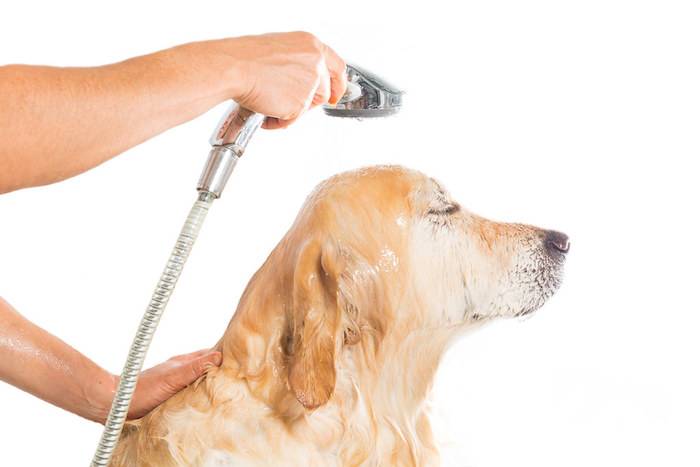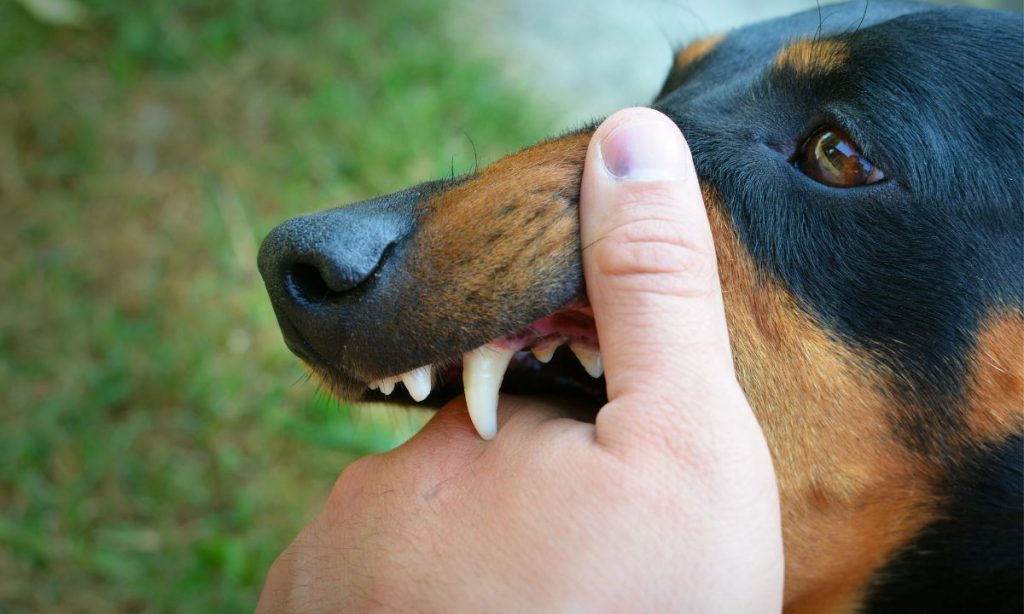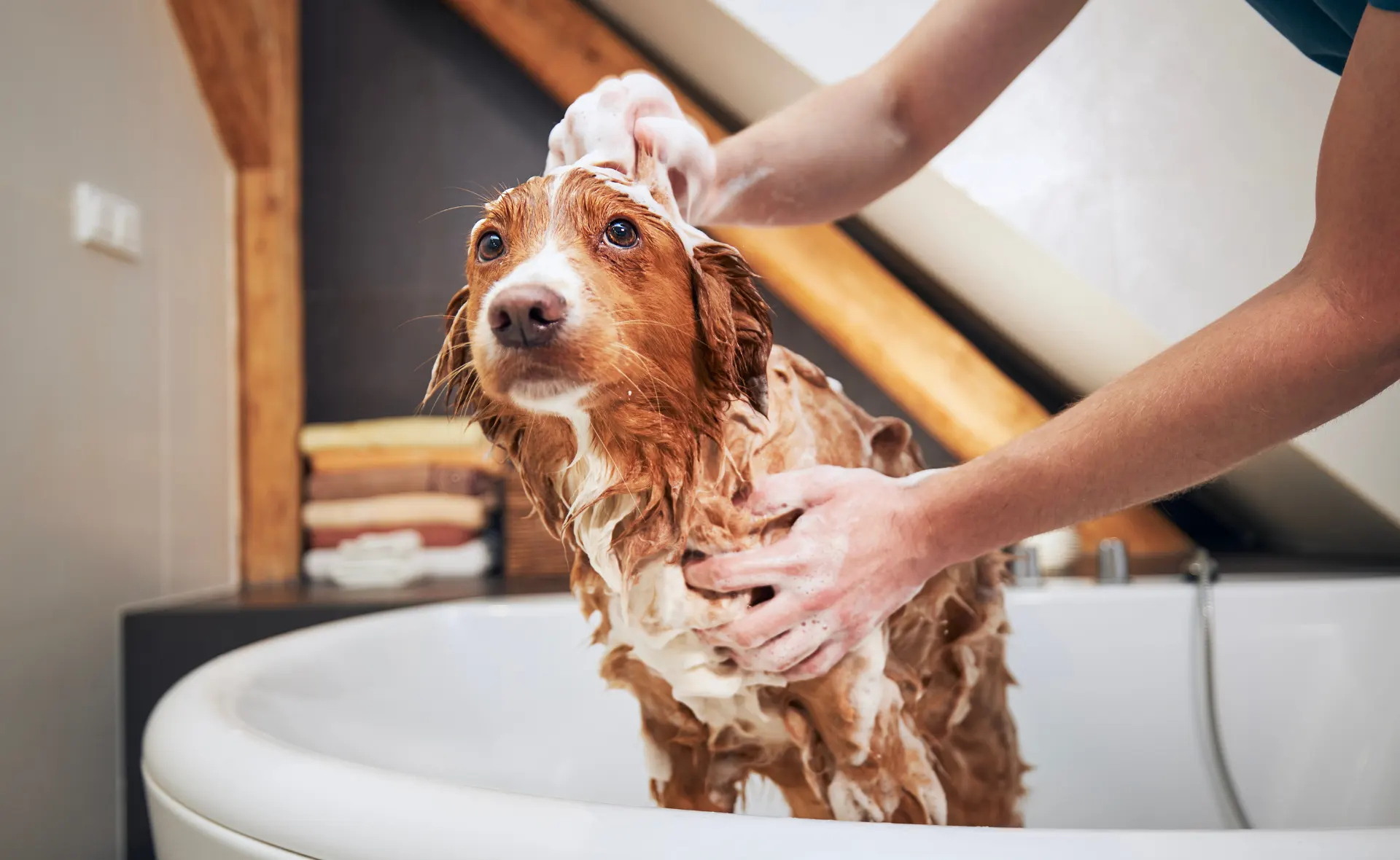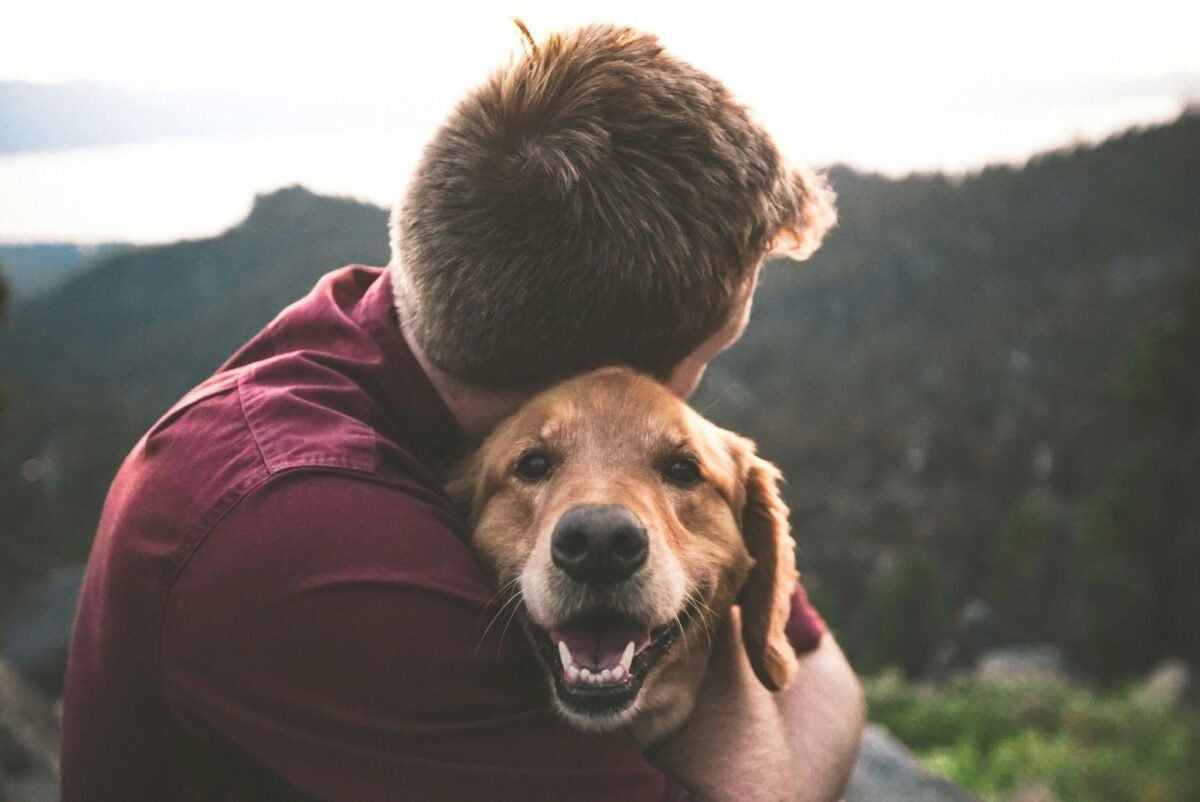Last Updated on July 23, 2021 by Dogs Vets
Do You Need to Bathe your dog before grooming
Yes, it is advised you Bathe your dog first.
Before giving your dog a bath (place a towel on the floor of the bath so your dog’s feet feel secure). Dry your dog fur with a towel, then allow your dog to swaddle around the house to get excited.
Next, cut the nails as they soften from the bath. Be careful and don’t cut too much, otherwise, you’ll cut quickly and cause bleeding (if you have styptic powder handy). Use a nail file to smooth sharp edges.
Trim the fur or hair carefully between the pads and around the nails. Next, dry your dog with a hairdryer until it is completely dry.
Clean the inside of your dog ears with witch hazel cotton pads. Trim the hair around your dog’s ears, the feathers along his legs and belly/chest, and the fur around his anus and all over his back and groin area.
If you do not feel confident enough doing something like this, take your dog to a very reliable and reputable groomer, especially if your dog needs to have his anal glands cleaned while bathing.
How to groom a puppy for the first time
Understanding how to groom a puppy for the first time require more than just brushing. Some breeds of puppies take better care of their coats than others, while some may have access to dry, drip coats.
Puppy grooming not only includes brushing the puppy but may also require bathing the puppies, cleaning the dog’s ear, caring for the eyes, trimming the claws, paying attention to the anal gland, and even how to brush the dog’s teeth.
These articles give you all the information you need, including tips to keep your puppy looking and feeling their best.

One of the most remarkable things about becoming a dog’s groomer
First of all, it’s fascinating to meet a new furry-pet client and start your grooming appointments. Who wouldn’t want to spend time with these cute and charming cute dogs?
One thing is for sure: meanwhile, when it comes to grooming puppies, you need a keen eye to encourage them to get used to the process!
Acclimating a puppy to grooming is an essential function of the first grooming appointment. You can create a comfortable and comfortable environment for each dog, and they will feel safe during future grooming appointments.
Follow these professional grooming tips to ensure each pup gets used to their appointments and the salon experience!
When should puppies get their first grooming appointment?
12 weeks of age
We recommend starting at 12 weeks old. The first actual grooming appointment will introduce the puppy and the dog owner to experience the amazing world of grooming. The puppy will be slowly introduced to a bath, blow-drying, nail clipping, and slight trimming.
Grooming puppy coat types
Different breeds of puppies and their sport distinctive coat types.
Grooming requirements vary among these furry examples. This post will explain what to expect and prepare you for as far as grooming goes if you have a short puppy with a smooth coat, a thick double coat, a furry coat, curls, or other fur types.
Puppy fur
Newly born Puppies are born with a single layer of soft, fluffy fur that helps regulate body temperature. This coat naturally gives way to their adult coat, which is usually thicker and stiffer than the puppy’s coat.
As dogs develop, dog breeds with double coats grow two layers of adult fur, with the undercoat usually shorter than the outer coat. Dog breeds with single coats grow their distinctive coats as they lose their puppy hair; some furs are short and curly, and some long and silky. Some changes in appearance are expected during this stage.
Dogs may develop coats of a different color than the puppy’s coat. The Dalmatian’s dog breed is known for this, as they are born without spots, but many breeds grow and develop different coat colors and patterns as they lose their puppy’s fur. The English Setters, Bedlington Terriers, Kerry Blue Terriers, and Shih Tzu are some of the breeds that can drastically change colors from puppy to adult.
When do puppies lose their fur coats?
Puppies lose their coats between 4 and 6 months of age, although this timeframe varies greatly from dog breed to dog breed and can start at 12 weeks or wait until they are a year old. You may not notice your puppy shedding, especially if they are a short-haired breed, or the change could be dramatic.
Some long-haired breeds go through some awkward months known as “the ugly ones” and may look a little shaggy, bumpy or hirsute when their adult coats arrive. Other breeds, such as the Pomeranian, can take up to 2 years to grow their adult coats into fully.
Types of coat fur
Specific types of coats need different levels of grooming and fur care. There are five basic coat types:
Smooth Coat: Smooth coats dogs require the least amount of grooming time, but the dog’s fur cannot be neglected.
The hair sits close to the body, like on a dachshund, and should be washed and brushed very frequently, though not as much as some other types of fur. If your smooth-haired dog is shedding a lot, use a hair removal shampoo to curb the problem.
When brushing your dog, first use a bristle brush against the crease of the hair, then repeat the process following the arrangement of the hair. A spiked brush can help remove hair from the dog’s skin and keep the fur shiny.
After your puppy has been washed, using both shampoo and conditioner to keep that coat nice and shiny, towel dry, and allow the hair to air dry.
Double Coat: Dogs with a double coat, like Newfoundlands, have a soft undercoat that provides insulation and a more durable coat that repels water and protects against dirt. Because of this double coat, which can be short or long-haired, they will need a little bit more grooming compared to other types of fur.
First, use a hairbrush or pin brush when you start with the undercoat on double-coated short-haired dogs. Brush outward from the skin, then brush with the fur on the topcoat.
With long-haired dogs, take your time brushing sections of the dog’s coat. You might also consider using an undercoat rake to really loosen up those tangles.
You can start by brushing outward from the skin to move loose stray hairs. Then, use a wide-tooth comb to do the same with the undercoat. There may be some knots, so use a detangler to remove them. Finish by brushing on the topcoat, then bathe with shampoo and conditioner.
Long Coat: Longer fur on dogs like German Shepherds requires combing or brushing almost daily, especially during shedding season. Long coats can be rough or silky, but for both, use a recommended shampoo when bathing your dog to avoid any form of pain or irritation.
Dogs with Long, coarse coats have a soft undercoat that should be brushed with a spiked brush and a smooth bristle brush. Silky-haired dogs, such as setters and spaniels, do not have undercoats, but there is still a risk of tangling in the fine hair.
When bathing, use a conditioner to add strength and shine to your dog’s coat. If possible, dry the dog’s hair with a blow dryer after the bath and then brush it again.
Metallic Coat: Several terriers and Irish greyhounds have shaggy coats that are susceptible to tangles. Metallic coats, also known as broken coats, require both a comb to strip and a brush to smooth when cleaning.
Use the comb to thin the hair by running it lightly down the dog’s back, using a detangler to remove mats if necessary. Remember to follow up the thinning by brushing the fur away from the skin with the hairbrush.
Consider bringing a shaggy-haired dog in for professional grooming, as this is not an easy task to master.
Curly Coat: Dogs with curly coats, such as poodles or Bichon Frise, have thick, soft curls that rest close to the body. Keep curls trimmed as they grow quickly and can possibly tangle.
When brushing, use a soft, curved brush against the fur to make the coat soft. When bathing, use a shampoo, as conditioner can weigh down the coat and make it harder to cut after bathing. First, dry with a towel and then blow-dry and then brush the coat off the skin.
How to groom a puppy for the first time: Top 15 Tips
Puppy grooming
Grooming puppies also involves keeping their claws and paws healthy, including their nails. When puppies’ nails are allowed to grow too long, they can get caught on objects, break or tear and cause severe pain.
Please read this article to learn how to trim your puppy’s claws, teach your puppy to accept the procedure, and prevent problems with claws or nails as he grows.
How to Prepare Puppies for Grooming
This is a step-by-step puppy grooming tip to help your puppy accept handling and get used to the grooming equipment. This helps prevent your puppy from feeling scared when going to the groomers and even encourages puppies to enjoy the experience.

Give them plenty of exercise in advance.
A long walk or playtime in advance will eliminate some of their excess energy and make the visit less anxious.
Speak softly and provide treats upon arrival.
Words of encouragement and a treat when they come through the door can go a long way – and every puppy loves to hear that he’s a good boy or girl!
Keep the first grooming visit short and lead the way.
Bring them in first just for a bath, then for a quick trim. Work your way up to finishing nails and full haircuts. By the time it’s time for that haircut, they’ll be used to the sights, sounds, and smells of the salon.
Don’t wait too long to start a good habit.
We see all too often pet parents who wait a long time before bringing their pet in for their first grooming session. Take your dog to a groomer as soon as they reach the 12-week mark, and remember to do all their vaccine shots!. This is essential when it comes to grooming.
Stay calm and keep it short and sweet.
Most groomers will be expecting to meet your puppy. Why? Because dogs can misbehave when their owners are around, creating a dangerous environment for themselves and the grooming staff.
We know it can be very hard to stay away from your puppy, especially when they are in a new environment. Stay calm.
Dogs can sense your feelings; if you are nervous, they will be nervous! Keep your outing short and sweet to minimize their anxiety and breed a more confident dog.
How to bathe a puppy
Every puppy sooner or later gets a little dirty and will always benefit more from a nice bath. This post will explain how to bathe a puppy, precautions to take, and which breeds may require more bath time than others.
How to Use Waterless Pet Wash to Remove Skunk Odor
Puppies are curious creatures, and if given a chance, they may decide to make friends with a skunk. The resulting skunk odor can be a challenge to remove. There are many commercial products available to remove skunk odor.
There is also a simple do-it-yourself recipe to create a de-skunk solution for your skunk pup.
Remember to always go with the flow.
The first grooming session can be exciting or nerve-wracking for a puppy, so it’s essential to assess each dog’s comfort level. Pay attention to the dog’s body language.
If your small puppy furry friend is misbehaving, give him or her a few minutes to calm down, longer than you would for an adult dog.
Use possible calming techniques, such as petting and using a quiet voice, to get your puppy used to his new grooming environment.
Start your grooming slowly, and if the dog seems relaxed and comfortable, you can continue. If you ever notice any nervousness, it’s best to pause and reassure your puppy that he is safe with you.
Puppies may have some issues with being separated from their owner (any dog can!) So let each puppy get to know you before diving into long grooming appointments.
If you encounter a particularly anxious puppy, advise your clients to schedule shorter grooming appointments more frequently until their friend gets used to grooming.
A good positive grooming experience for a puppy can turn into a lifelong love for its groomer, so don’t push any comfort zones!
Get to know each puppy.
As we mentioned earlier, puppies can feel more nervous around new people – if they haven’t had the chance to socialize with people as much as older dogs. When you first get your new puppies, take your time to get to know them and let them smell you.
Once they know your scent and see the wonderful person you are, they will be thrilled every time you want to groom them!
With all dogs, it is essential to talk to owners during the first meeting to get a perspective on each puppy’s personality. Chances are, you have groomed dogs with similar traits. Once you have an idea of the puppy’s typical behavior, it’s easier to notice if something happened during the grooming session.
Also, you’ll need to consider your guidelines for grooming puppies that haven’t received all of their vaccinations. Many dogs or pet groomers choose to ask for proof that a puppy has been fully vaccinated. There is absolutely nothing wrong with that! It minimizes the risk of disease or problems in your salon.
Try to keep your dog calm during grooming.
Keeping a dog calm during a grooming appointment should constantly be your top priority. This should help you keep them safe and do your job correctly.
When scheduling appointments for a puppy’s first grooming session, try to pick a time when your salon isn’t bustling.
It could be early morning or mid-afternoon, depending on your client base. Creating a quiet and calm atmosphere will ensure that there’s nothing else for your pup to stress about!
Go step-by-step
Working on a puppy can be a challenging task, especially if they are excitable! If you find that you’re having trouble cleaning your dog effectively because they are excited, take a break and let the dog relax.
New experiences can be overwhelming for any dog, so it’s important to ease a puppy into your grooming routines at all times.
Many puppies can handle all aspects of a grooming appointment but may need more time to settle in. Or, they may only need a few minutes to roll around in their cage during each step of the grooming process.
Allowing your puppy clients to shed their excess energy will make your job much easier to complete!
Always defer to your professional judgment if you feel you can’t continue an appointment. The longer your puppy stays, the more anxious they can become.
Each situation will vary, and you will quickly know the signs! Experience is what will really help you when it comes to grooming each type of puppy.
How to safely clean ears
Puppies’ ears should appear pink with no reddened or rough skin, smell clean, and have only a small amount of earwax (if any).
Different breeds of puppies require extra ear care, depending on whether their ears are erect (pricked) or droopy (floppy) and whether they have hair growing inside or around the ear.
Puppy dental care and brushing teeth
Puppy dental care is essential to the dog’s health because many adult dogs regularly develop serious tooth problems by age four.
Brushing your puppy’s teeth regularly is the best way to keep his mouth and dental healthy and clean, and always train your dog to accept mouth brushing, and this can only be done best when your dog is still a puppy.
How to express your dogs’ anal glands
Your dog’s anal glands are located under the dog’s tail and provide a distinctive odor that identifies your puppy to other dogs. This odor is quite pungent and, in some puppies, can become a stinky problem or worse.
Anal glands help your dogs to express themselves during defecation regularly. Sometimes, however, they get clogged and have to be expressed manually.
Final Thoughts
You should now have the answer to your question, “At what age should I start getting my puppy groomed.” With just a little preparation, your puppy should have a great experience when he arrives for his first grooming session between 10 and 16 weeks of age.
If you have any other questions, please contact us as soon as possible. We love answering questions about everything puppy-related!
See also: The Rottweiler Dog History, Breed, Diet, Cost, Size, Training.
Fact Check
We strive to provide the latest valuable information for pet lovers with accuracy and fairness. If you would like to add to this post or advertise with us, don’t hesitate to reach us. If you see something that doesn’t look right, contact us!
Reference: Scottiepaws.com

















